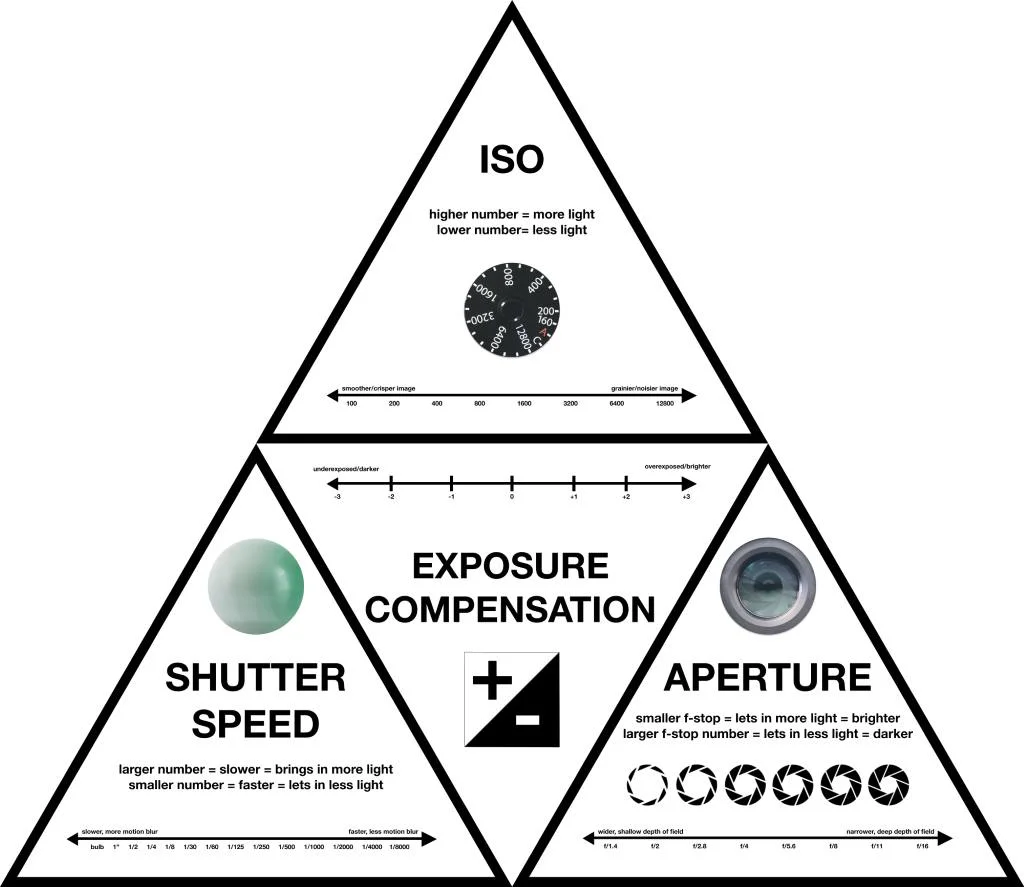Jul 3, 2024
Understanding Camera Settings: Aperture, Shutter Speed, ISO, White Balance
Photography is an art that relies heavily on technical knowledge. Understanding camera settings is essential for any photographer. Key settings include aperture, shutter speed, ISO, and white balance. Mastering these will significantly enhance your photographic skills.
Aperture
Aperture controls the amount of light entering the camera lens. It is measured in f-stops, such as f/2.8, f/4, and f/16. A lower f-stop number (like f/2.8) means a larger aperture, allowing more light in. This is ideal for low-light conditions and achieving a shallow depth of field, which blurs the background and isolates the subject. Conversely, a higher f-stop number (like f/16) means a smaller aperture, letting in less light. This increases the depth of field, making more of the scene in focus. Therefore, choosing the right aperture setting is crucial for controlling exposure and artistic effect.

Shutter Speed
Shutter speed determines how long the camera’s sensor is exposed to light. It is measured in seconds or fractions of a second, such as 1/1000, 1/250, or 1/30. A fast shutter speed (like 1/1000) captures fast-moving subjects sharply. This is essential for sports and action photography. Conversely, a slow shutter speed (like 1/30) allows more light to hit the sensor, which is useful in low-light situations or for creating motion blur effects. For instance, you can use a slow shutter speed to capture the smooth flow of water in a river. Thus, understanding shutter speed helps in freezing action or depicting motion.
ISO
ISO measures the sensitivity of the camera sensor to light. A low ISO number (like ISO 100) means low sensitivity, which is perfect for bright conditions and yields less grainy images. A high ISO number (like ISO 3200) increases sensitivity, suitable for darker environments but can introduce noise or grain into the photo. Therefore, the challenge lies in balancing ISO to achieve the desired exposure without compromising image quality. Adjusting ISO is crucial when lighting conditions change, and you can’t alter aperture or shutter speed.
White Balance
White balance ensures that colors in your photos appear natural. It compensates for different lighting conditions, which can cast a color tint on your photos. For instance, incandescent bulbs produce a warm, yellowish light, while fluorescent lights can create a cool, bluish tint. Cameras offer preset white balance settings like daylight, cloudy, tungsten, and fluorescent. Furthermore, many cameras allow custom white balance adjustments. Correct white balance eliminates color casts and ensures that white objects appear white. Thus, mastering white balance is essential for true-to-life color representation.
Interplay of Settings
Understanding how aperture, shutter speed, ISO, and white balance interact is vital. These settings do not operate in isolation; they influence each other. For instance, increasing ISO might allow you to use a faster shutter speed or a smaller aperture. However, it might also introduce noise. Similarly, adjusting the aperture affects the depth of field and the amount of light entering the camera, which impacts shutter speed and ISO settings. Hence, a balanced approach is necessary to achieve the desired exposure and artistic effect.
Practical Application
In practice, photographers often use the exposure triangle, which is the relationship between aperture, shutter speed, and ISO. For example, in low-light conditions, you might need to increase the ISO and open the aperture to avoid using a slow shutter speed that could cause motion blur. Conversely, in bright light, you might reduce the ISO and close the aperture to avoid overexposure. Moreover, white balance adjustments might be necessary to ensure accurate color reproduction. Therefore, practice and experimentation are key to mastering these settings.
Conclusion
In conclusion, mastering camera settings like aperture, shutter speed, ISO, and white balance is crucial for any photographer. Each setting plays a significant role in determining the exposure and quality of your photos. Moreover, understanding their interplay allows for creative control and technical precision. Therefore, investing time in learning and practicing these settings will greatly enhance your photographic skills. Happy shooting!
More Details